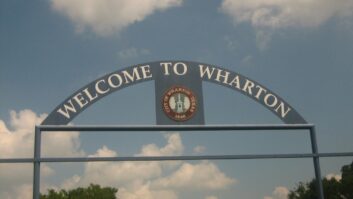FCC Investigates Market Mod Modifications
Nov 1, 2012 3:00 PM, By Lee Petro
Like a mechanic constantly fine-tuning the engine of his hot-rod, the FCC issued an order make further modifications to its rules relating to community of license changes for radio stations. After opening the floodgates to modifications in 2006, the FCC has steadily applied the brake in recent years to ensure that rural areas retain local radio service.
Most recently, the Commission adopted rules in 2011 to prevent stations from attempting to serve an urbanized area by first filing for a community on the outskirts, obtaining priority as a first local service proposal, and then subsequently filing a minor change application to move the transmitter site to a location that would serve both the urbanized area, and the originally proposed community of license. The Commission stated that proposals which could subsequently be moved via a minor modification application to a new tower site that would serve the entire urbanized area would have to overcome the presumption in the original proposal that the proponent’s intent was to serve the entire urbanized area. The FCC called this the Urbanized Area Service Presumption (UASP). If the UASP was not overcome by the proponent, the proposal was not eligible for the first local service preference under the Commission’s allocation priorities.
Several parties sought reconsideration of the UASP, and several others sought clarification relating to the application of the UASP to pending proposals. Since the UASP involves a close scrutiny on the technical parameters of the proposal to divine the intent of the proponent, many of the requests for clarification/reconsideration dealt with the calculation and accounting for other stations in the surround areas. In response, the Commission tweaked its processing procedures in four notable ways:
� The Commission will now use the actual transmitter coordinates of an FM station proposing to change its community of license when calculating its gain and loss areas. Previously, the Commission used the allotment coordinates, which often times did not reflect the reality of the change in community, nor did it comport with the procedures for AM stations.
� The Commission will also require proponents to use their authorized and proposed power and height above average terrain when calculating gain and loss areas. As part of this analysis, the Commission requires proponents to use the standard prediction methodology to consider the surrounding terrain, but will not be permitted to use supplemental terrain showing or alternative contour prediction methods.
� The Commission also clarified that all full-service AM stations, including daytime AM stations, FM stations and NCE FM stations must be counted in a proponent’s gain and loss study. In addition, proponents may rely on granted, but unbuilt, construction permits for new stations, but may not rely on vacant FM allotments for which a construction permit has not yet been granted.
� The Commission will not apply the UASP where a proponent seeks to move from community in an urbanized area to another community in that same urbanized area. However, the Commission will not permit the proponent to rely on a first local service allotment preference, but will examine only the proposed service area and population gains to determine if the proposal is in the public interest.
Finally, the Commission modified the application of the UASP on pending applications and allotment proceedings. Rather than apply them to all, non-final, decisions relating to non-hybrid proceedings as set forth in the 2011 Order, the Commission determined all minor change applications filed prior to April 20, 2009, which specified community of license changes, would be spared from the UASP. Also, all FM allotment proceedings for which the petition was filed prior to April 20, 2009, were exempt from complying with the UASP. Finally, the UASP procedures would not be applied to any decision which was released prior to March 3, 2011, the release date of the 2011 Order.
Only time will tell whether these changes will lead to an uptick in new proposals. While it is possible that the use of actual facilities when preparing gain and loss studies will open up new possibilities, it is unlikely that such changes will overwhelm the Commission.
Dateline

Dec. 1: Stations in Colorado, Minnesota, Montana, North Dakota, and South Dakota file License Renewal Application and EEO Program Report, and noncommercial radio stations file Ownership Report (323-E). Commence running License Renewal Post-Filing Announcements, continuing on Dec. 16, Jan. 1 and 16. Stations in Kansas, Nebraska and Oklahoma commence running License Renewal Pre-Filing Announcements, continue running on Dec. 16, Jan. 1 and 16.
Petro is of counsel at Drinker Biddle & Reath, LLP. Email: [email protected].
November 2012
Step inside the radio studios at Universal Studios Orlando, ensure your data center’s reliability, apps for field contribution, selecting an FM antenna and Field Reports from JK Audio and AKG….










